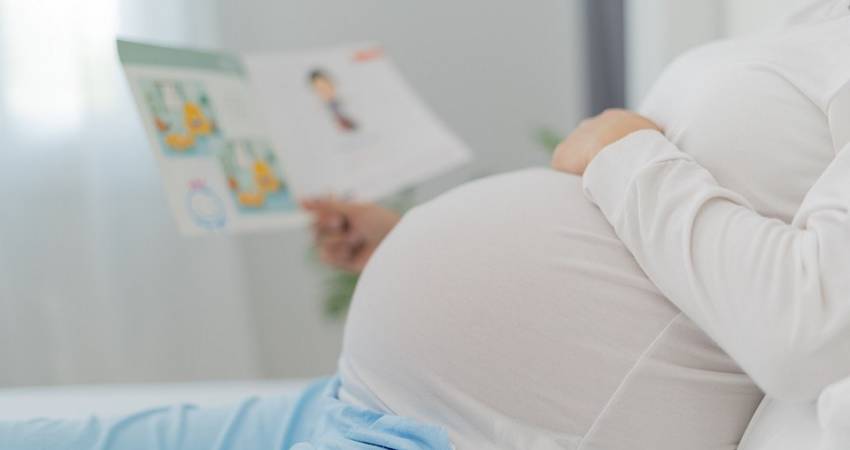
Exposing unborn babies to language in the womb could influence language learning later in life
Exposure to language in the womb can impact an unborn baby’s neural activity, with the potential to influence language learning later in life, according to a recent study from the University of Padova in Italy and Paris Descartes University in France.
In experiments, researchers found that there was heightened brain activity in newborns when exposed to the language they heard most frequently while in the womb. The research encouraged parents to engage in conversation with their unborn children for potential language-learning benefits, although it did not determine the exact timing of language receptivity while in utero.
The study, titled “Prenatal experience with language shapes the brain” published in the Journal, Science Advances, draws attention to the importance of the prenatal period in setting the foundations for later language development.
Researchers, publishing their findings, said that: “The prenatal period lays the foundations for further language development.”
“These results provide the most compelling evidence to date that language experience already shapes the functional organisation of the infant brain, even before birth,” authors of the paper wrote.
The findings come eight years after a 2015 study revealed that unborn babies can react to music played outside the womb as early as 16 weeks, by moving their mouths and their tongues. It adds to the knowledge that between five and seven months gestation, an unborn baby hears sounds outside of the womb, while other studies have indicated that newborn babies prefer their own mother’s voice to other female voices.
The research used encephalography (EEG) – which involves a web of small sensors which are attached to the scalp to pick up electrical signals which are produced by the brain.
The study saw 33 newborn babies who had native French-speaking mothers being monitored using EEG at the Robert Debré Hospital in Paris when they were between one and five days post-birth.
While the babies’ brain waves were monitored, researchers played them audio from the children’s book, Goldilocks and the Three Bears, with snippets of the story played in the mothers’ native language, French, and also Spanish and English.
The newborns, after listening to their native language, French, showed “enhanced neural oscillations” which are linked to language processing abilities, according to researchers.
This, they said, suggested that the babies were already familiar with the primary language spoken while they were still in the womb – which researchers said came from their mothers, as well as the mothers’ verbal interactions with others while pregnant.
“Exposure to speech leads to rapid but lasting changes in neural dynamics, enhancing LRTCs and thereby increasing infants’ sensitivity to previously heard stimuli,” researchers said.
“This facilitatory effect is specifically present for the language and the frequency band experienced prenatally.
“These results converge with observations of increased power in the electrophysiological activation of the newborn brain after linguistic stimulation and suggest that the prenatal period lays the foundations for further language development, although it is important to note that its impact is not deterministic, as children, if exposed young, remain capable of acquiring a language even in the absence of prenatal experience with it, e.g., in the case of preterm infants, immigrant or international adoptee children, or after cochlear implantation,” they added.
Author of the study, Professor Judit Garvain, commented:
“All mums produce enough speech for their babies to learn from while in the womb just by going about their everyday, regular business – talking to neighbours, friends, co-workers and family members.”
She said that it “makes sense” for expectant mothers to speak directly to their baby bumps, especially during the third trimester.
Maria Maynes
This article first appeared on gript and is printed here with permission
Photo credit: Shutterstock
Featured
- Yes, that hideous celebration of 300 abortions is real
- White Crosses Memorial: Dungarvan once again pays its respects to our aborted babies
- Precious Life welcomes strong stand by Scottish Bishops against 'draconian' Buffer Zones law
- The fury over sex-selective abortion in Britain
- IFPA’s claim ignores HSE statistics on benefit of 3-day wait
- 12 Wonders of Christmas a huge Success
- Campaign to stop EU funding out of state abortions - tell your EU commissioner to vote NO
- Judge recuses himself from case of woman praying in censorship zones for “apparent bias”
- I’m a Celebrity star criticises “sad” UK law that aborts babies with Down Syndrome up to birth
- British actress speaks out on “serious risk” assisted suicide bill has for those with eating disorders
- Caplan’s “Tragic Hysteria of Abortion” discusses the flaws with mainstream Turnaway Study interpretations
- Mother and baby doing well after surgery for mother’s cancer during pregnancy
- Josiah: Abortion Survivor
- Loving the Unborn
- Rally for Life 2025
- Don't assist Suicide 2024
You can make a difference.
DONATE TODAY